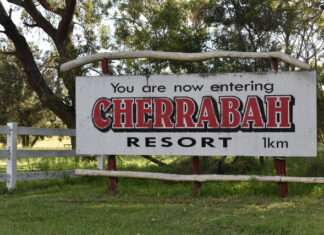More than 220,000 hectares of farming and grazing land in the Condamine catchment have been captured as part of an initiative to help landholders plan for the future following the extraordinary flooding events in December 2010 and January 2011.
After months of plotting, printing and dozens of postage tubes, the initiative reached a significant milestone earlier this month, with the 250th flood map printed and delivered to a Brigalow landholder.
Condamine Alliance partnered with Precision Agriculture to provide the flood maps at no cost to landholders through funding from the Australian Government’s Caring for Our Country.
Condamine Alliance CEO Phil McCullough said, “Our aim is to provide landholders with a useful tool to help quantify losses, plan improvements to address water logging and erosion, and assist in the rebuilding and restoration process.The maps have been provided free as both a poster size (A1) hard copy and an electronic PDF copy, particularly useful for future reference,” Mr McCullough said.
“We were fortunate to be able to work with Precision Agriculture’s expertise and equipment to be able to provide a high quality product across such a diverse area in a relatively short time,” he said.
About two million hectares – about 80 per cent of the Condamine catchment – were captured, according to Precision Agriculture director Tim Neale.
“The maps were taken from a satellite immediately following the floods across most of the catchment’s agricultural land,” Mr Neale said.
“We did have some issues with cloud cover due to the significant rainfall at the time. However, we went with having minor impediments to the images so we could get maps out as soon as possible to enable landholders to rapidly assess the damage,” he said.
“While it was impossible to gather imagery showing the actual water flow during the flood, the path of water is clearly evident in the imagery.
“Map recipients have been able to compare this imagery to older maps or imagery like Google Earth to determine the path of the water; where it had come from, what may have directed it or had an effect on the impact of the water.”
As part of the initiative, the first 30 people to register were offered the opportunity to have Mr Neale provide free, invaluable one-on-one advice on interpreting the maps, individual assessment and advice.
“For some it highlighted issues beyond the paddock fence as watercourse changes or impediments built up over the years. For others it reinforced what they already knew about their property and supported their plans to make changes to paddocks or crops.”
Mr McCullough said the maps will have a broader application beyond property level.
“We have also offered the imagery to State Government agencies to assist in their response to this flooding.
“We would like to thank all landholders and consultants for their interest in this activity – the uptake of this initiative was astounding, with over 250 maps printed and delivered, representing 220,000ha of farming and grazing land,” he said.
“Condamine Alliance will continue to work with landholders, industry, government and community to deliver initiatives that help ensure our catchment’s agricultural resources are sustainably managed,” Mr McCullough said
Get the latest news to your email inbox FREE!
REGISTER




